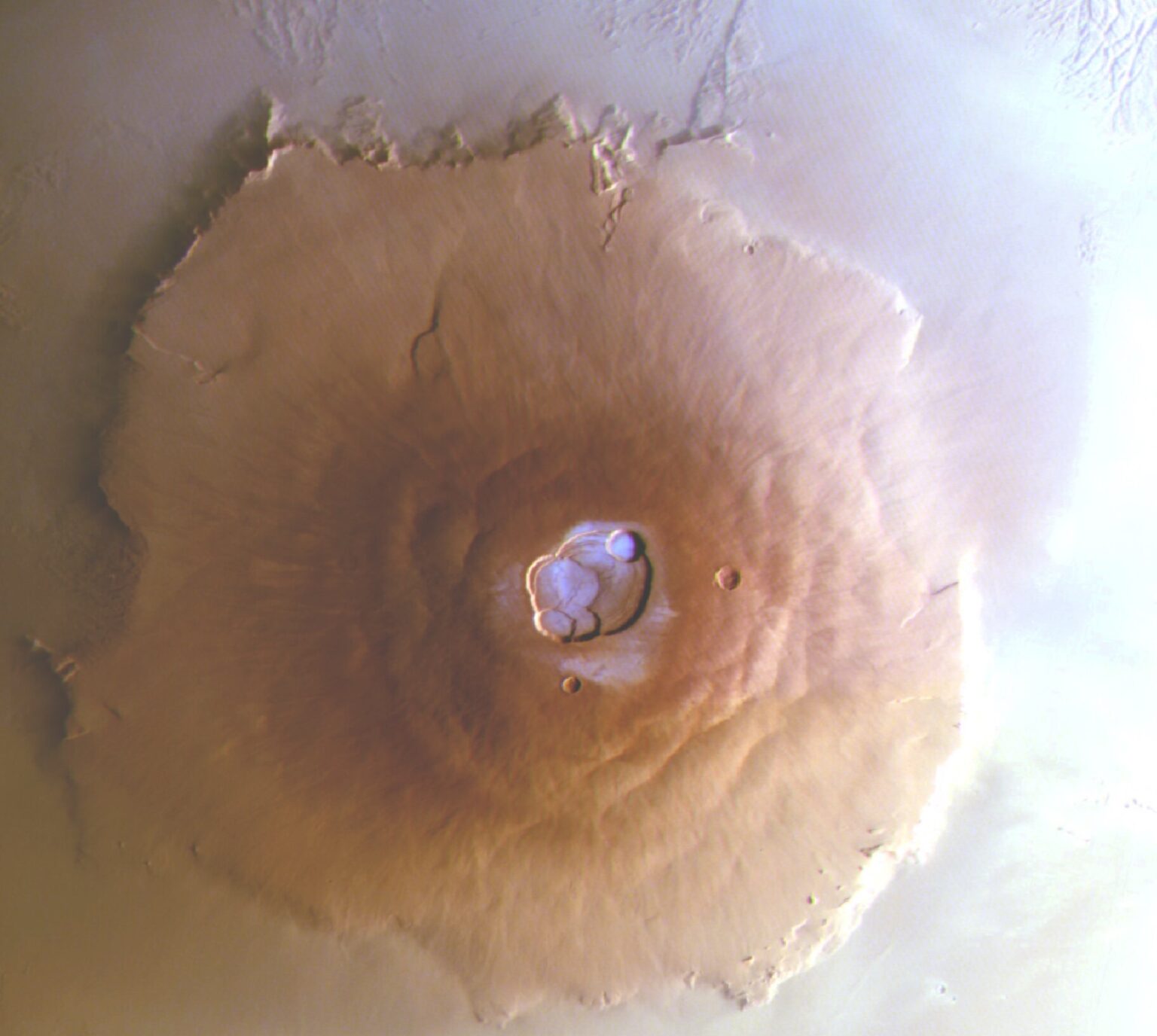A camera aboard Europe’s ExoMars Trace Gas Orbiter has captured frost falling on the top of Olympus Mons for the first time. This Martian volcano is the highest in the Solar System. The new discovery indicates the presence of moisture transport processes in the red planet’s atmosphere.

Frost on top of Martian Olympus.
At the top of Martian volcano Olympus, frost falls from time to time. This was reported by a team led by the University of Bern using high-resolution color images obtained by the Bernese Mars camera, CaSSIS, installed on board the European Space Agency’s ExoMars Trace Gas Orbiter. Understanding where water can be found and how it is transported is important for future missions to this planet and possible human exploration.
ExoMars is a program of the European Space Agency (ESA) to actively search for life on the red planet. The ExoMars Trace Gas Orbiter (TGO) carries the Color and Stereo Surface Imaging System (CaSSIS), a camera system designed and built by an international team led by Professor Nicolas Thomas of the Institute of Physics at the University of Bern. It has been observing Mars since April 2018 and provides high-resolution color images of its surface.
Using these high-resolution color images, an international team led by Dr. Adomas Valantinas was able to detect water frost on Mars. The study was recently published in the journal Nature Geoscience.
Unexpected discovery
Frost has been found on the tops of mountains in the Tharsis area. These volcanoes are the highest mountains in the Solar System, with Olympus Mons rising 26 km above the surrounding plains. Frost formation was not expected since these mountains lie at low latitudes relatively close to the equator of Mars.
At these low latitudes, large amounts of sunlight tend to keep surface temperatures high. So scientists did not expect to encounter frost here. Moreover, the thin atmosphere on Mars inefficiently cools the surface, so unlike on Earth, high-mountain surfaces can get as hot at midday as low-lying surfaces.
How the frost was discovered
To detect the frost, Valantinas and team analyzed more than 5,000 images taken by the Bernese Mars camera CaSSIS. Since April 2018, CaSSIS has provided observations of local dust activity, seasonal changes in CO2 ice deposition, and the existence of dry avalanches on Mars.
The discovery was confirmed by independent observations using the High Resolution Stereo Camera (HRSC) aboard ESA’s Mars Express orbiter and the Nadir and Occultation for Mars Discovery (NOMAD) spectrometer aboard TGO.
Ernst Hauber, a geologist at the DLR Institute for Planetary Research in Berlin and co-author of the current study, said: “This study nicely demonstrates the value of different orbital assets. Combining measurements from various instruments and modeling, we can improve our understanding of atmosphere-surface interactions in a way that wouldn’t be possible with one instrument alone.”
According to Hauber, the results also show how important long-term monitoring of planetary processes is, as some phenomena only become apparent when comparing multiple measurements over time.
Important findings for future missions to Mars
Despite being only a hundredth of a millimeter thick, the patches of frost cover a huge area. “The amount of frost represents about 150,000 tonnes of water swapping between surface and atmosphere each day during the cold seasons, the equivalent of roughly 60 Olympic swimming pools,” as Valantinas explains.
Understanding where water can be found and how it moves between reservoirs is important to many aspects of red planet exploration. “Of course, we want to understand the physical processes involved in the climate of Mars. But, in addition, understanding the water cycle on Mars is also of major importance for establishing key resources for future human exploration and to constrain the past or present habitability,” Valantinas concludes.
According to phys.org


